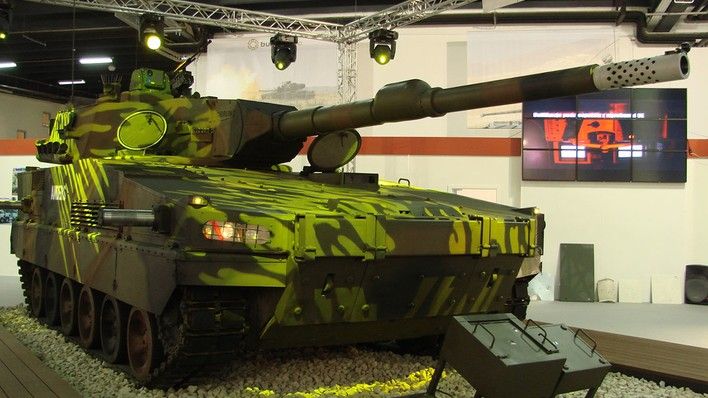Poland Goes Back to Gepard Direct Fire Support Vehicle. Schedule announced

Gepard close support vehicle (Wóz Wsparcia Bezpośredniego) programme is about to be resuscitated. National Centre For Research and Development is going to sign an annex to the R&D study agreement in February – as Defence24.pl found out. According to the assumptions made, the work shall come to a completion by 2024.
Responding to our questions, the press team at the National Centre for Research and Development announced that work is going on, aimed at preparing an agreement annex with regards to the Gepard [Cheetah] Close Support Vehicle research and development study. OBRUM Gliwice is to act as the primary contractor within the scope of the contract mentioned above. The relevant annex is to be signed next month.
The Press team of the National Centre for Research and development announced that at the moment the formal, final procedure is going on, aimed at developing the provisions of the annex that would amend the original agreement, tailoring the implementation of the project so that they match the redefined Operational Requirements for the Close Support Vehicle (redefined during the term of the Agreement), and the recommendations made by the Polish Ministry of Defence. The annex in question is planned to be signed in February 2019.
Implementation of the Gepard [Cheetah] programme has been suspended back in 2016, considering that some of the assumptions made within the scope of the project were being redefined by the MoD. A year later, a recommendation has been made, within the Strategic Defence Review, to cancel the project. This, however, did not happen.
Resumption of this programme is being considered instead. The information released by the National Centre for Research and Development suggests that Close Support Vehicle programme would follow a different set of guidelines now. Signing of the annex would mean that possibility would emerge for the Centre to provide full funding for the Gepard project.
The National Centre for Research and Development also suggested that it only issues a consent for financing the analytical-conceptual phase of the project, with the use of the Centre’s assets. Following the procedure of negotiating the agreement changes and conclusion of the aforesaid annex, the Contractor will have a chance to resume full financing of the project with the use of the Centre’s funds - the entity claims.
Representatives of the National Centre for Research and Development also took part in a meeting involving the OBRUM Gliwice company. During that meeting, the scope of works related to the change of the requirements and the increased financing as well, have been both defined. On 10th January a negotiation meeting involving the Contractor took place, during which the expected material scope and tactical and technical parameters have been defined, adequately to the changed requirements indicated within the redefined Operational Requirements for the Close Support Vehicle. The meeting, as the press team at the National Centre for Research and Development added, also covered the consequential and relevant increased funding. The conditions arranged and listed above shall be introduced into the agreement with the use of an annex.
The framework of the annex assumes that the R&D study in question would come to an end in 2024, six years after the originally planned deadline. The vehicle that is to be developed would differ significantly from the original close support vehicle design.
The Gepard Close Support Vehicle programme has been implemented on the basis of an agreement signed with the National Centre for Research and Development since the late 2013. A consortium of Polish companies led by OBRUM acts as the contractor. Initially it was assumed that a 35-tonne weight-class vehicle would be created, utilizing a 120 mm cannon and based on a tracked platform. The vehicle was to carry armament similar to contemporary MBTs, at the same time offering greater mobility achievable at a lower cost. The passive armour protection was to be a bit weaker, when compared to conventional main battle tanks.
Gepards were to replace, above all, the T-72 Main Battle Tank within the structures of mechanized brigades. It was assumed that the platform would work together with the modernized Leopard MBT that is operated by the Polish armoured brigades. The current Gepard-related operational concept is not widely known.
